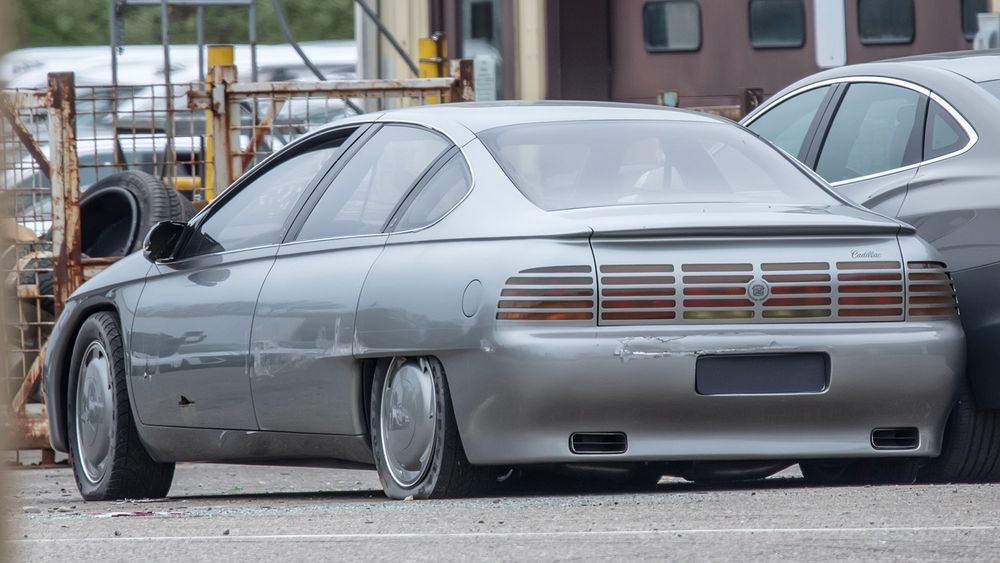GM’s Historic Concept Cars: Cadillac Aurora and Pontiac Rev
Automakers that have been around a long time have a lot of history. Some of that history remains as physical remnants, preserved for display or reference, including show cars and prototypes. Moreover, when a company has amassed a significant amount of historical vehicles, such as GM, it might eventually decide to do some spring cleaning. Recently, GM made such a decision, discarding two old concept cars, one of which you might remember.
The Discarded Classics
An eagle-eyed photographer discovered the 1990 Cadillac Aurora show car and, on another occasion, the 2001 Pontiac Rev concept in the same lot where GM gathers cars designated for destruction. This area often serves as a final resting place for tired prototypes and early build test cars that cannot be sold to the public after their useful lives have ended.

Concept Design and Features
The two concept cars debuted at the Chicago auto show; the Cadillac in 1990 and the Pontiac in 2001. The Cadillac, characterized by its sleek silver design, featured a 200-hp 4.5-liter V-8 engine and all-wheel drive. Interestingly, it used a frame adapted from the front-wheel-drive DeVille, which had a transversely mounted engine, while the Aurora concept’s V-8 was longitudinally positioned, better aligning with its rear-wheel-drive setup.
Besides its appearance in the 1993 film “Demolition Man,” which utilized several GM concept cars as futuristic stand-ins, the Cadillac Aurora influenced the styling of the 1997 Cadillac Catera sport sedan. The Catera shared some design elements, such as segmented full-width taillights and rounded body shapes. However, it had a six-cylinder engine instead of eight, and its proportions were reminiscent of the Chevy Malibu rather than the alluring Aurora.

The Pontiac Rev: A Shift in Design Trends
Pontiac’s Rev concept clearly represents the early 2000s era. While the Cadillac emerged at a time when sedans dominated, the Pontiac illustrates how consumer automotive preferences shifted towards crossovers and SUVs within just a decade. The Rev showcases a high profile and a windswept design reminiscent of contemporary coupe-styled SUVs, complete with raked rear windows and oversized wheels.
In contrast to the Cadillac’s grounded mechanics, the Pontiac’s features leaned toward the fantastical. The Rev had a 245-hp 3.0-liter V-6 engine, utilizing a sequential automated manual transmission to distribute power to all four wheels. Moreover, it featured an adjustable suspension that allowed the driver to raise the vehicle, advanced clamshell-style doors, and a split tailgate design.

Fading Glory
As captured in the current condition, each show car has certainly seen better days. The Cadillac’s tires, which surprisingly appear to be in decent shape for 34-year-old rubber, are deflated. Additionally, it shows signs of wear such as a punctured driver’s door and peeling paint on the rear bumper. The vehicle seems to have been unceremoniously stuffed against a Buick LaCrosse sedan.
On the other hand, the Pontiac Rev was squeezed between less interesting GM models, including a red Cadillac XT4 SUV and a somewhat weathered Cadillac Lyriq electric SUV. Notably, some of the bright neon-green paint from the Rev left a mark on the Cadillac’s fender. While the front of the Rev remains hidden from view, it appears to be in better shape than the Aurora concept, with all four tires still inflated.
We understand that neither of these concepts are iconic representations within GM’s design legacy. The Aurora’s name later graced an Oldsmobile sedan that bore little resemblance to the original show car. Moreover, Pontiac has ceased to exist, and it remains unclear whether any styling elements from the Rev influenced production models directly. Nevertheless, it is undoubtedly disheartening to see vehicles that once embodied their brands’ finest moments on display at major auto shows deteriorate to such a fate, regardless of their historical significance.




